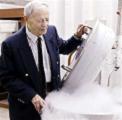
"Longevity through technology, education, and research"

Definition of Cryobiology:
The Society for Cryobiology defines cryobiology on their public web page as follows:
"The word cryobiology literally signifies the science of life at icy temperatures. In practice, this field comprises the study of any biological material or system (e.g., proteins, cells, tissues, or organs) subjected to any temperature below normal (ranging from cryogenic temperatures to moderately hypothermic conditions)".
For the purposes of those of us engaged in cryonics, a shorter definition might be that it is the study of how living systems and their parts, systems and subsystems react to low temperatures.
Use of Cryobiological Knowledge by Cryonics:
Cryonics tries to use the knowledge gained by cryobiologists and other fields of study to the degree possible. The purpose of this is in order to maximize the chances that an individual has in undergoing the procedures associated with cryonics.
General Background of Cryobiology:
It had been noted, of course, by people throughout the ages of the general effects of low temperatures on various plants and animals. The effects in antiquity were by and large noted to be deleterious to humans since homo sapiens is a warm blooded animal with an absence of fur. The absence of fur and other protective structures such as a large amount of subcutaneous fat is unlike, of course, many other mammals. Temperatures and conditions that might be suitable for other mammals could prove fatal to human beings. Further humans have very little ability to protect themselves from the cold other than through the use of warm clothing, shelter, and the ability to build a fire.
In ancient history, Egyptians apparently used some low temperatures in medicine. Hippocrates recommended the stopping of bleeding and swelling by the use of cold. At least one reference says that Robert Boyle did some experimental work on low temperatures and their effect on animals.
In 1950, an English biologist by the name of Christopher Polge managed to successfully fertilize chicken eggs with sperm that had been frozen. A couple of years after that, Polge used sperm that had been frozen in excess of a year to attain pregnancies in cattle.
On the 28th day of March of 1984, Zoe Leyland was born after first having been a frozen embryo. At this point in time, of course, human embryos, sperm, and eggs are routinely stored at cryogenic temperatures. As of 2009, some 600,000 people had been born after first being frozen embryos.
Today, research in cryobiology continues in various areas. The ideal situation would be, of course, the ability to store any tissues and, ultimately, entire organs and organisms themselves at temperatures suitable to attain a state of fully reversible "suspended animation". While progress has been made in the field of cryobiology, it isn't yet possible to place a human being in a state of suspended animation, Hollywood movies notwithstanding. In the meantime, cryonics continues to try to use such information and expertise as has been developed to try to improve and refine the process of cryonics itself.
A Source of Contention Between Cryobiologists and Cryonics:
Regrettably, the relationship between cryonicists and cryobiologists has not always been ideal. Some initial cooperative efforts with some cryobiologists followed the publishing of The Prospect of Immortality, Robert Ettinger's original book on the subject of cryonics. Sadly, this state of affairs didn't last forever and, at present, the Society for Cryobiology has had a bylaw in place since 1982 that states that the Board of Governors of their organization, on a 2/3 vote, "... may refuse membership to applicants, or suspend or expel members...whose conduct is deemed detrimental to the Society...including applicants or members engaged in or who promote any practice or application which the Board of Governors deems incompatible with the ethical and scientific standards of the Society...including any practice or application of freezing deceased persons in anticipation of their reanimation."
The fact is that there are indeed some members of the Society for Cryobiology who do agree with and assist cryonics organizations in their efforts. These individuals are highly scientifically trained and simply believe, as many members of cryonics organizations with scientific training do, that cryonics is a concept that is honorable, worthwhile, and worth pursuing.
At least one member of the Society for Cryobiology who was later openly quite critical of the feasibility of cryonics was initially helpful to the cryonics effort and wrote a letter to Robert Ettinger back in the late 1960's in which he indicated that he had the greatest respect and admiration for Mr. Ettinger and his efforts to organize the Cryonics Society of Michigan, the predecessor to the Immortalist Society. Further, the individual asked to be put on the mailing list and to be apprised of the developments of the Scientific Advisory Council of the Cryonics Society of Michigan and of CSM itself. This individual also was quite helpful to the now defunct Cryonics Society of New York in its initial efforts, including advice offered in the cryonic suspension of one of CSNY's patients.
It is hoped by many in cryonics that the position of the Society for Cryobiology will eventually change to one that is more tolerant of the divergent viewpoints held about cryonics by well meaning and well educated people.
Links on this website: